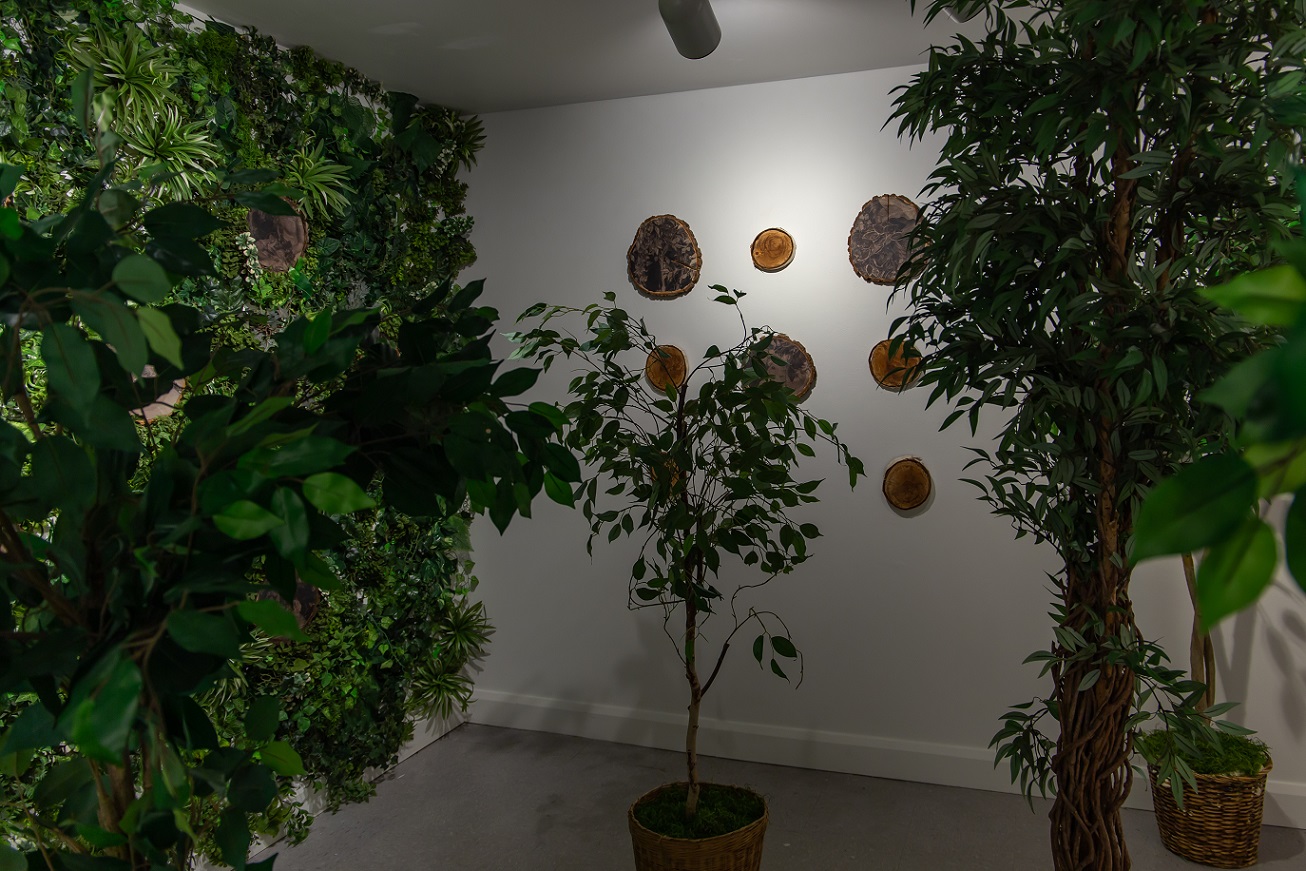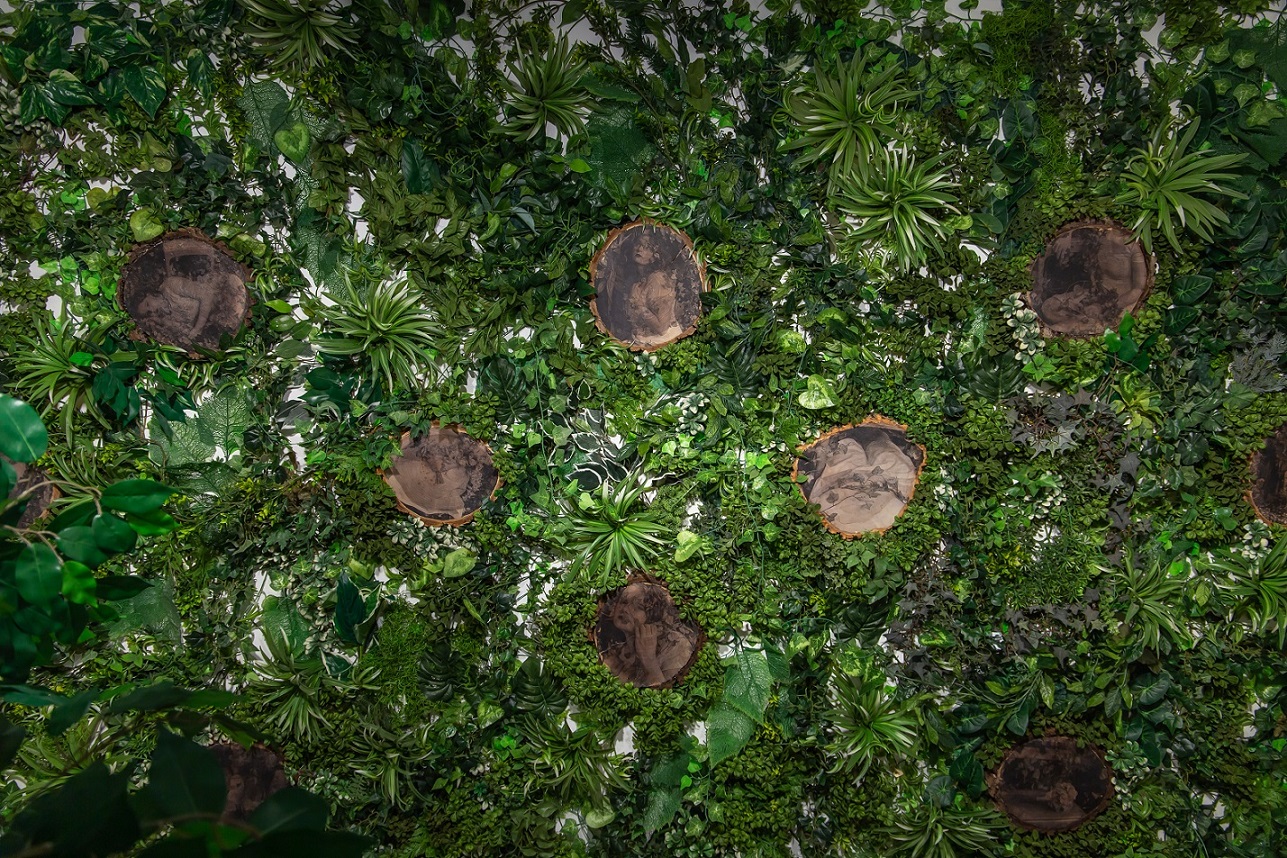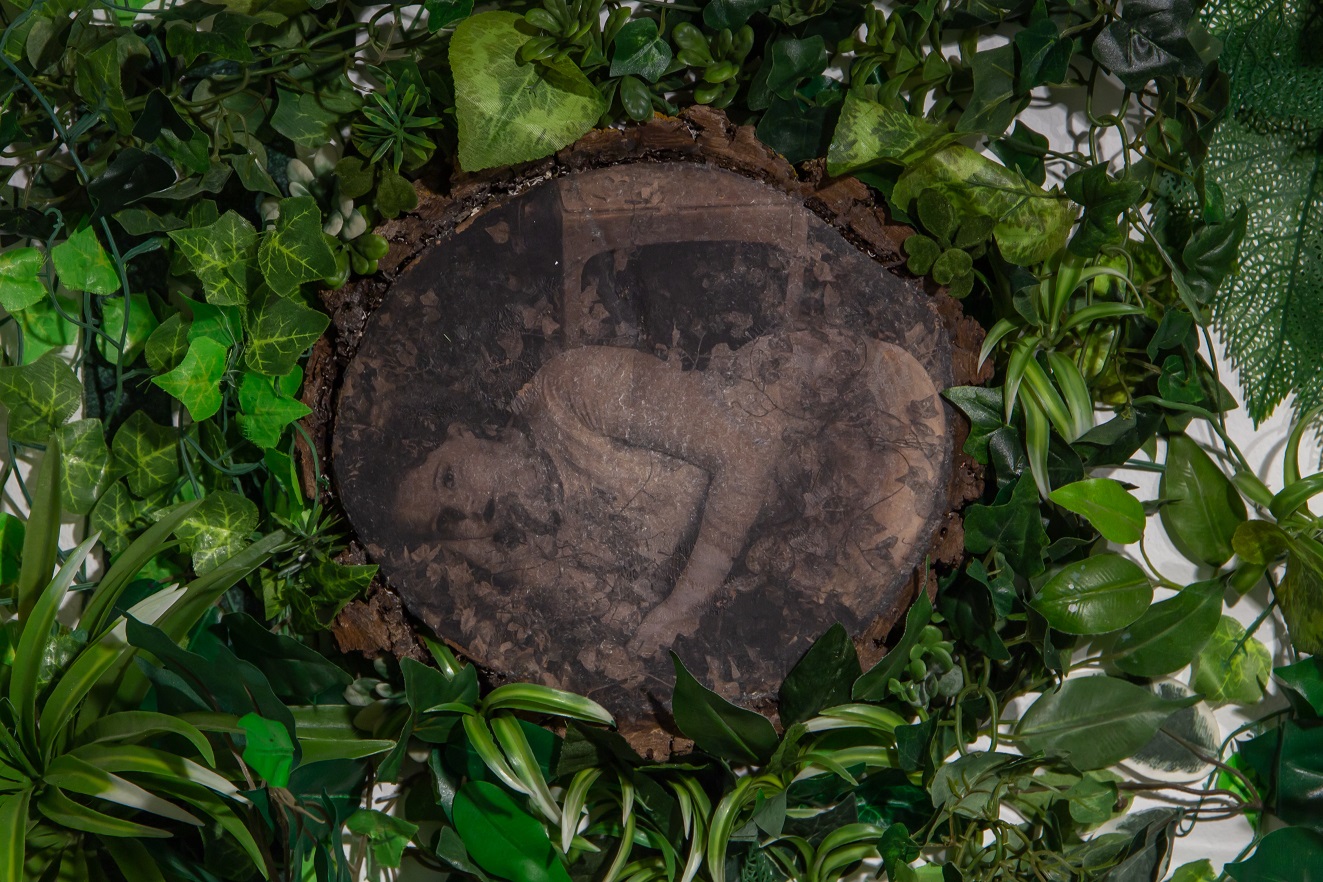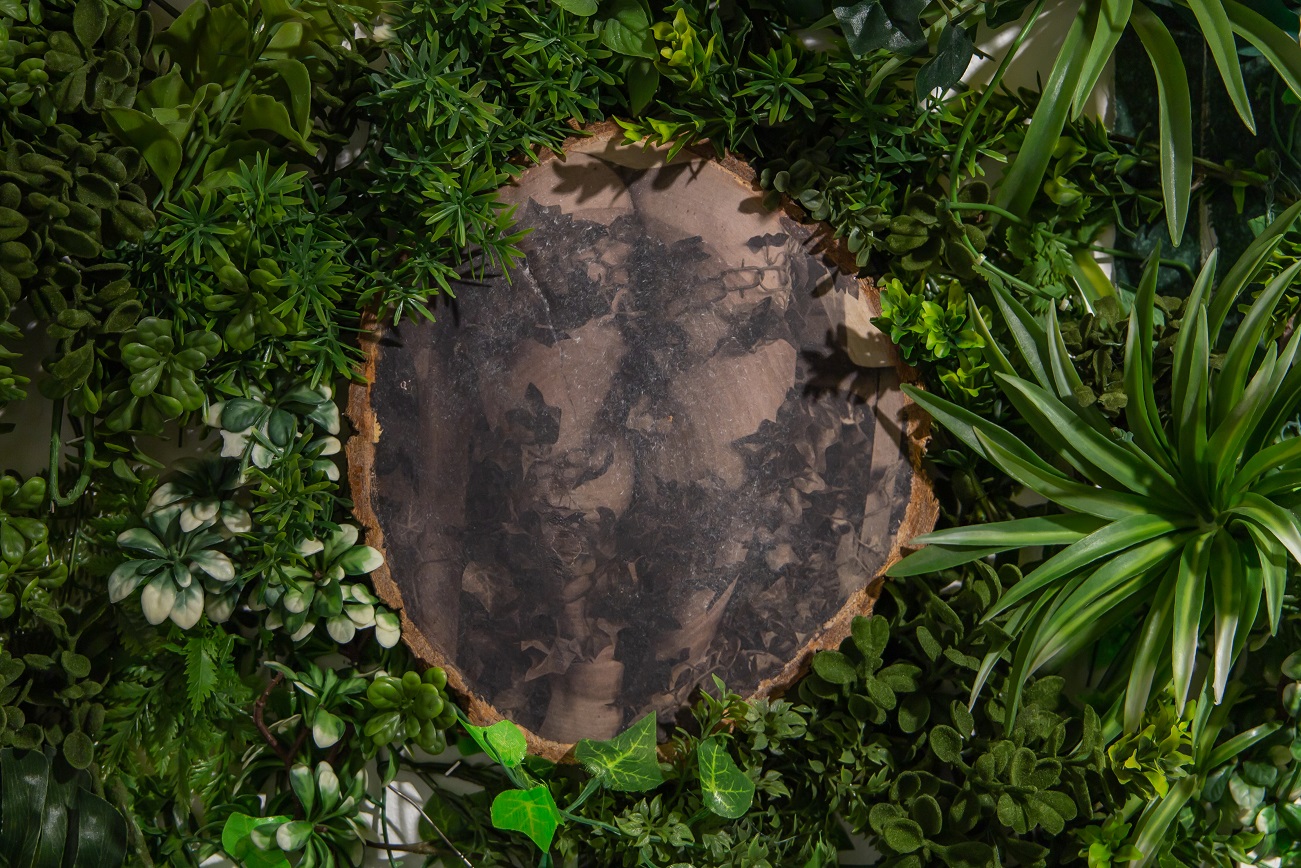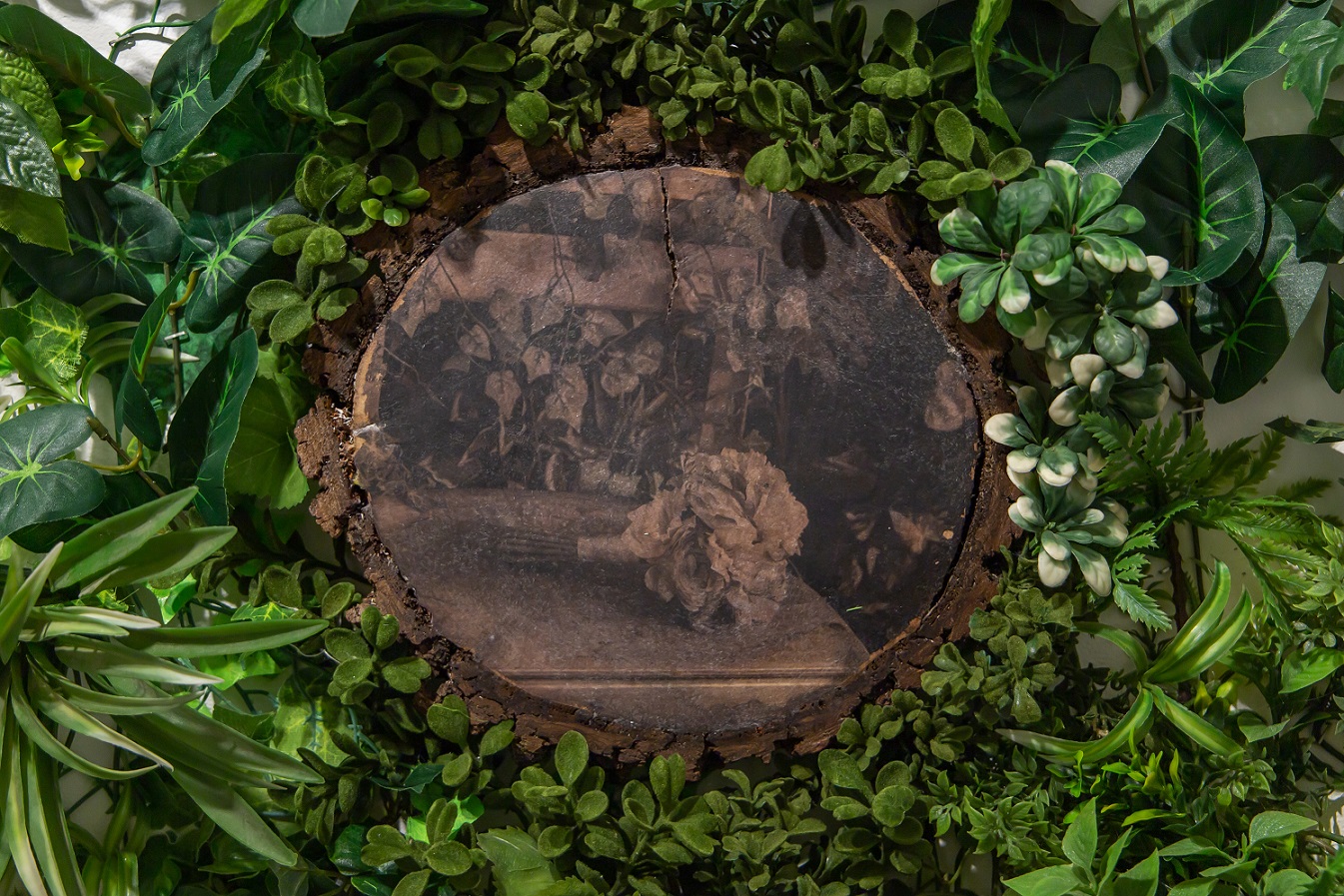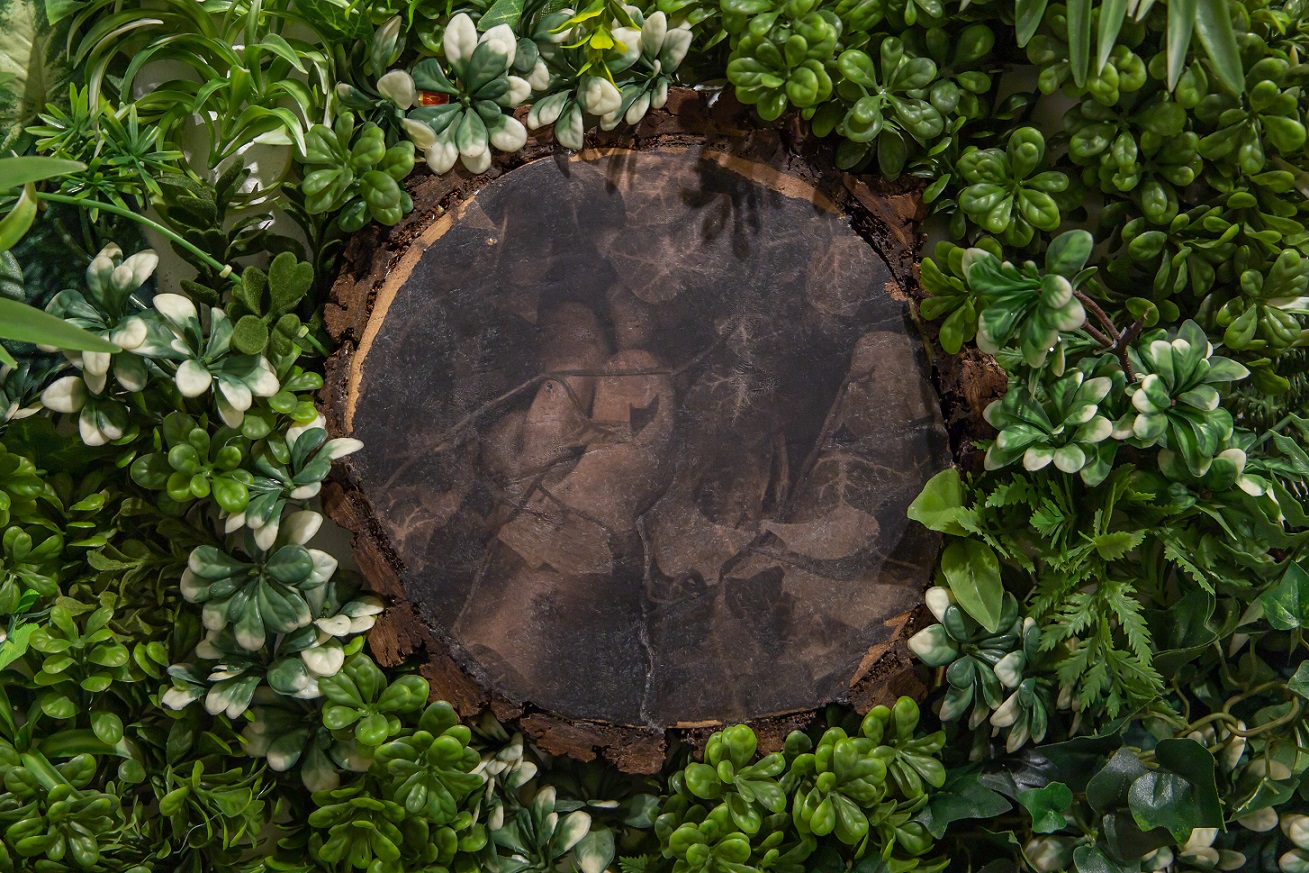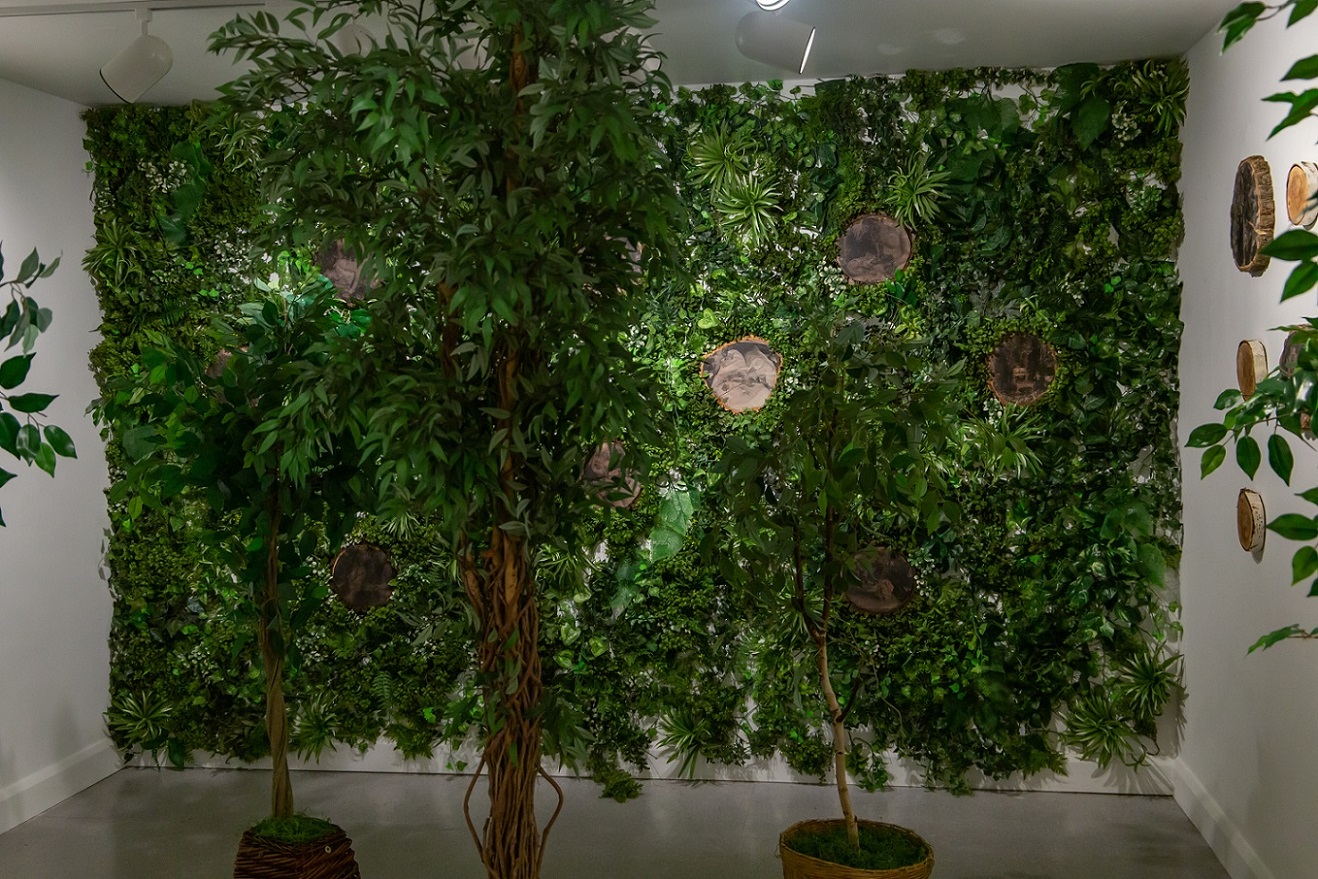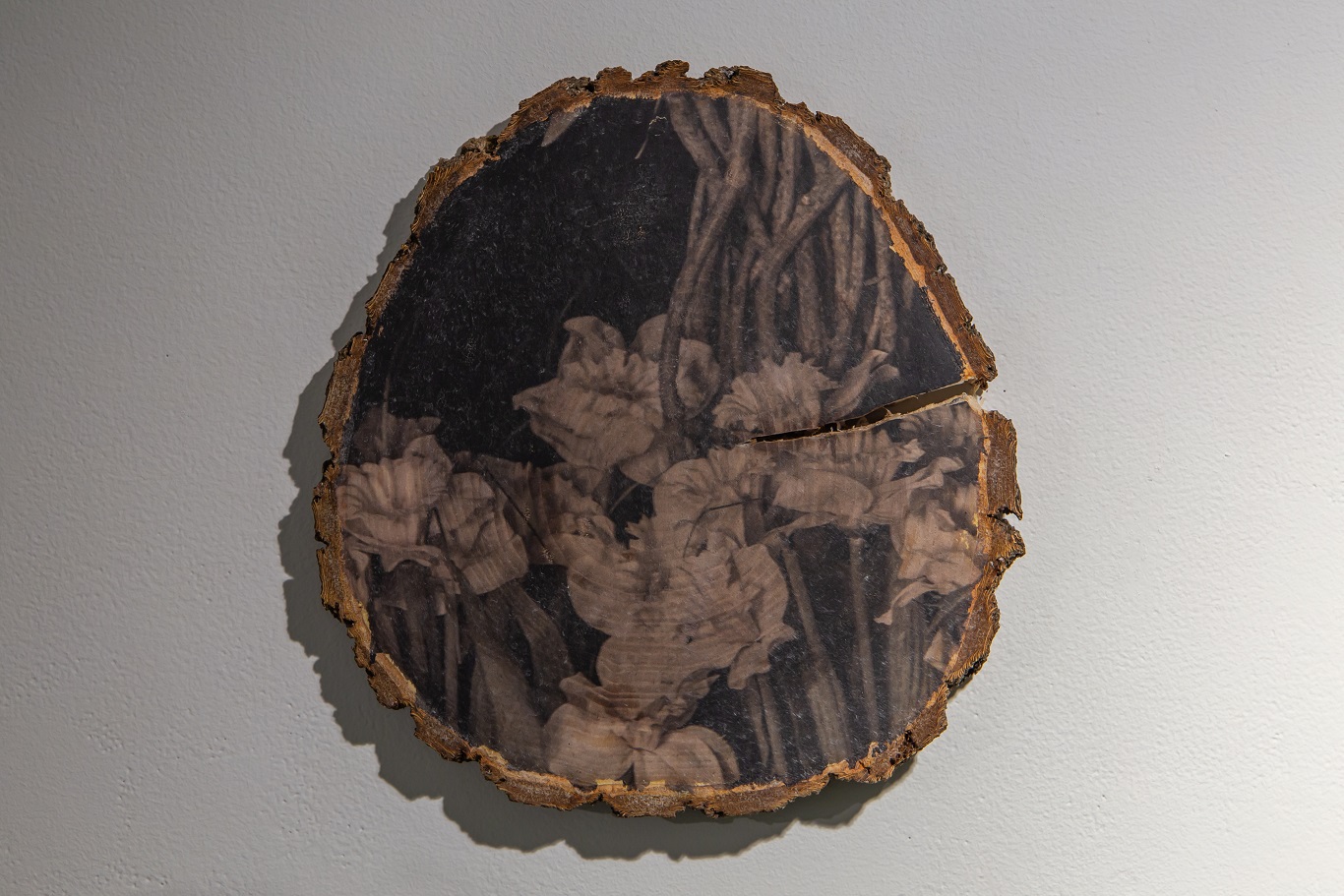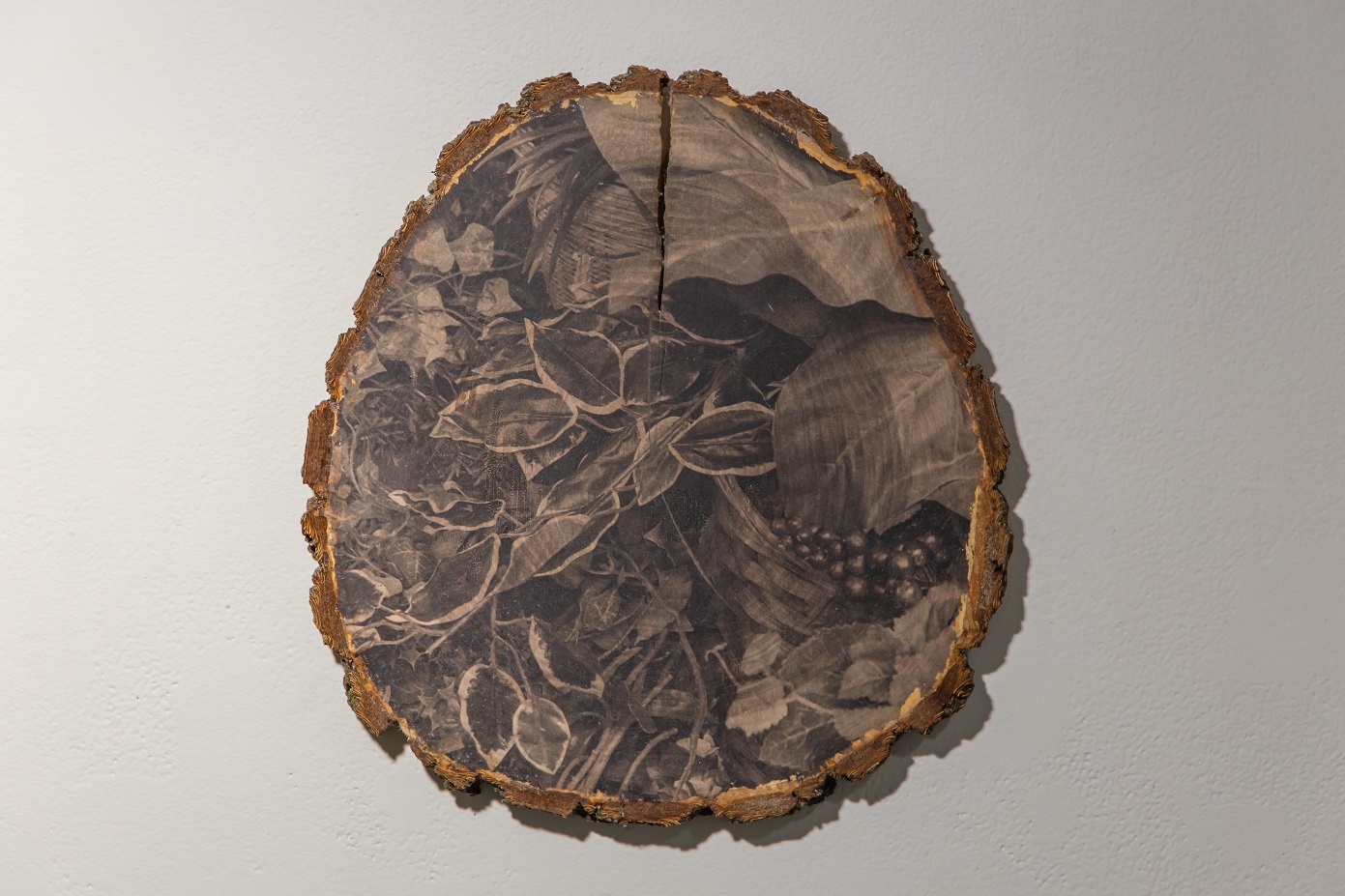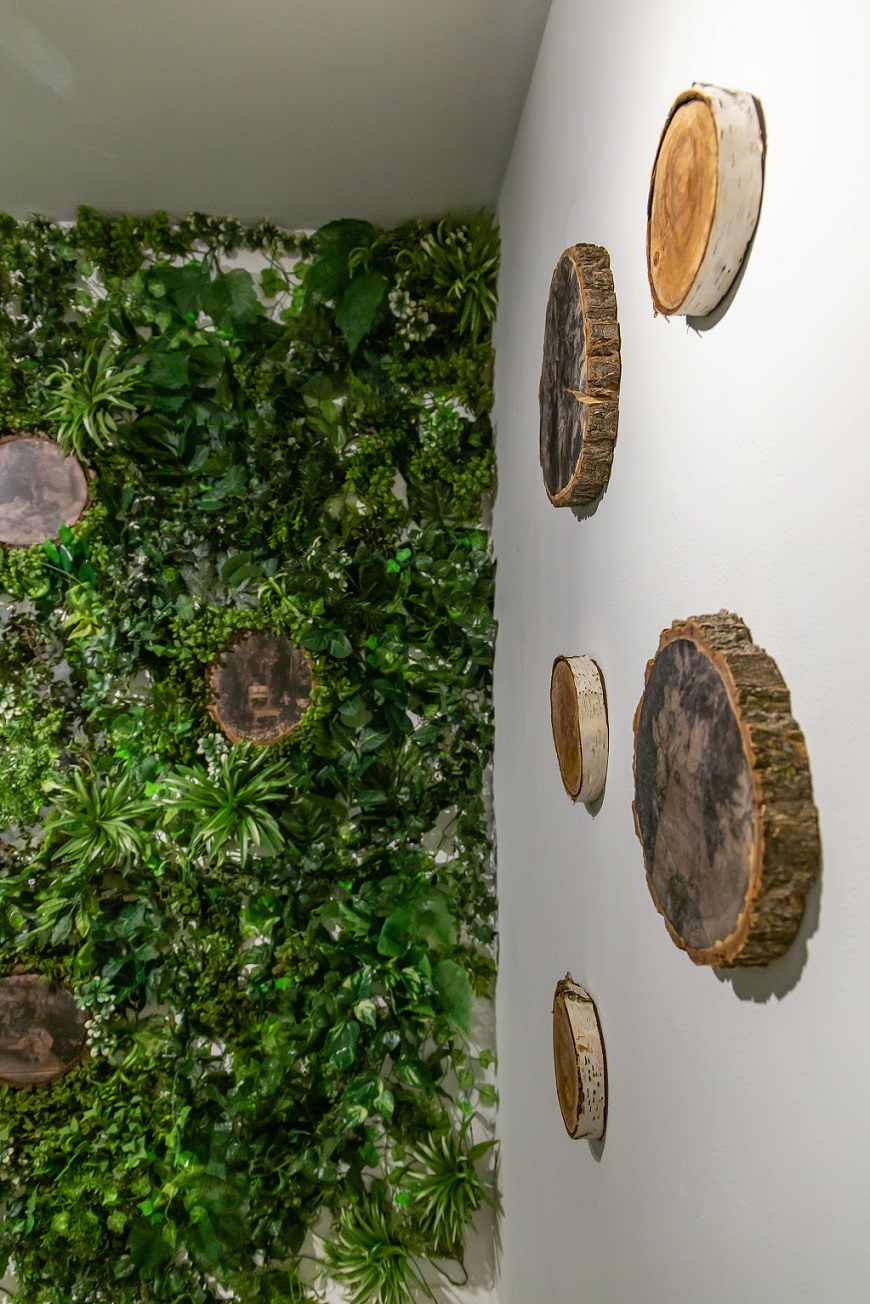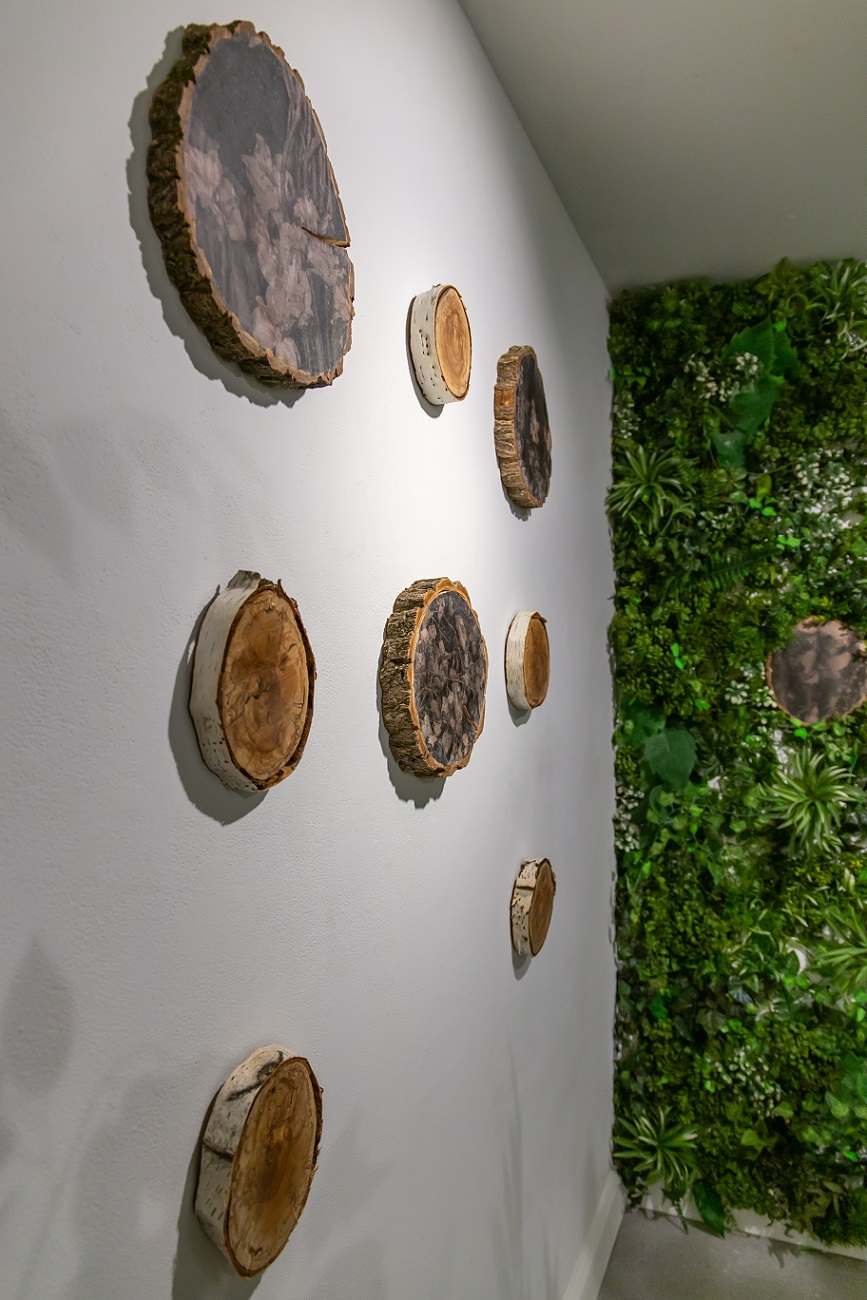Amelioration
In this body of work, I reference Albrecht Durer’s work “Adam and Eve.” Durer places Adam and Eve in the Garden of Eden where they are surrounded by plants and animals. The pair are thriving, yet there is a visual tension between Adam’s emotion and Eve’s action. In the biblical narrative, Adam and Eve are in the Garden of Eden and are told they can eat of any fruit, except for that of one tree, the Tree of Knowledge of Good and Evil. Eve yields to the temptation from the serpent and partakes of the fruit from this tree. Adam decides he, too, will partake, so they can remain together. Many believe that Adam and Eve committed a serious sin, and others believe this allowed them to grow. They can now experience joy and sorrow, health and sickness, peace and war, and can choose right from wrong.
In Amelioration, I’ve placed myself in a mock garden, replete with artificial vines and plants. Being a fake garden, it has no progression or purpose and is serving as a state of transition. Each tree trunk section shows the stunted growth of the tree and being placed among the fake garden shows that they, too, have no purpose. The overwhelming vines are constricting, much like the stagnation of life. Depicting myself in this unchanging garden represents my transition from an old mindset to a new one. Images of the garden illustrate that there is an overgrowth, but that I am no longer there, in that state of transition. Amelioration focuses on taking steps towards change and becoming aware of stagnation, while the process of creating this work became a practice in acceptance. A growth mindset requires becoming aware of where and what you can improve and accepting the disappointing and discouraging moments in life as catalysts for change.





